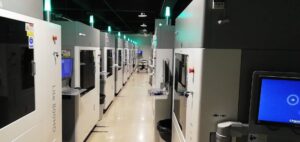3D printing, like laser forming technology, uses layered processing and overlay molding to complete 3D solid printing. The printing process of each layer is divided into two steps. First, spray a layer of special glue on the area that needs to be formed. The glue droplets themselves are small and difficult to spread. Then spray a uniform layer of powder, the powder will quickly solidify and bond when it meets the glue, while the area without glue remains loose. In this way, under the alternate layer of glue and layer of powder, the solid model will be “printed” and formed. After printing, the model can be “planed out” by sweeping away the loose powder, and the remaining powder can be recycled.
3D printing may seem complicated, but it is actually very simple
After watching a lot of 3D printed videos and models, you will be stunned by its magical cloning ability. This is amazing. It is a magical clone machine. How does this high-tech work?
Speaking of its principle, it is not complicated at all. Its operating principle is basically the same as that of a traditional printer, and it is also “grinded” by a nozzle. It’s just that 3D printing is not ink, but liquid or powder and other “printing materials”, using rapid prototyping devices such as light curing and paper lamination. The “printing materials” are superimposed layer by layer through computer control, and finally the blueprint on the computer becomes a real object.
Its working steps are as follows: use CAD software to create objects, if you have ready-made models, such as animal models, characters, or miniature buildings, etc. Then copy it to the 3D printer via SD card or USB flash drive. After printing settings, the printer can print them out. The working structure is as follows. The working principle of a 3D printer is basically the same as that of a traditional printer. It is composed of control components, mechanical components, print heads, consumables, and media. The printing principle is the same. The 3D printer mainly designs a complete three-dimensional model on the computer before printing, and then prints it out.

 Deutsch
Deutsch Français
Français 日本語
日本語 Español
Español
